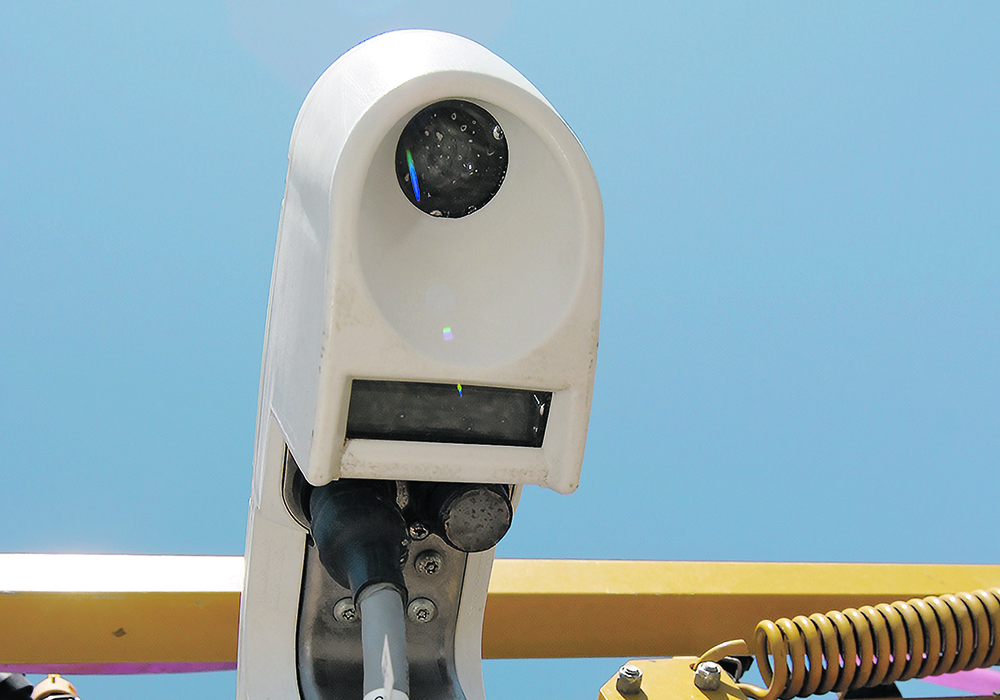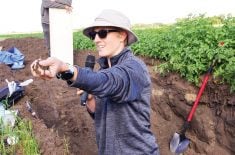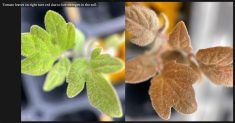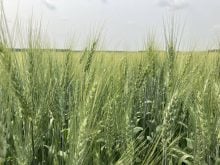Flatland variable rate fertilizer application works but likely depends more on current soil moisture than outdated data.
If farmers match available soil moisture to the instant of application, then flatland VR works.
That’s the opinion of Riceton, Sask., farmer Lee Moats. He said he knows VR nutrient application works on his table-flat farm on the Regina Plains, with the caveat that there should be no time lapse between making the fertilizer decision and making the fertilizer application. It’s the ultimate “right time” to have nitrogen rate decisions at the time the plant needs the nutrition.
For Moats, the “right time” is measured in seconds rather than months. VR recommendations based on seven-month-old soil tests, yield maps and other old data layers are not relevant at the moment fertilizer goes down the pipe.
“So much depends on what the environment has thrown at the plant in any given year. The variable rate we’re doing here does not relate to the different soil zones because we don’t have so much to differentiate soil zones. Our hypotheses is that it’s more weather related but also that we don’t really understand all the reasons for the variation that we are experiencing,” said Moats, who added there’s nothing new about the idea.
“Our higher ground looks pretty good in a wet year and the low ground looks pretty good in a dry year. Our topography is similar to a lot of areas in the southern Prairies. There’s no way to guarantee a moisture prediction. The plant itself can tell you what it needs, and that is what we are using the GreenSeeker for, sensing what the plant needs at exactly the time it needs it.
“So I guess you can say we’re doing variable rate, but we’re doing it with the GreenSeeker we bought way back in 2009. It’s the ultimate variable rate device because it cuts the time period between decision time and application time down to nanoseconds. It’s a genuine real-time decision maker on the go. And it doesn’t require a prescription map.”
Over the next 13 years the GreenSeeker paid for itself many times, sometimes with increased yield but mostly by reducing inputs costs. It continuously triggered lower nitrogen rates in those spots where it wasn’t needed to hit the target. It eliminated excess nitrogen application without reducing yield.
“Our initial idea was that the GreenSeeker would save us nitrogen in dry years,” Moats said.
“It has done that, but it has also saved us nitrogen on the really wet years when the crop was inhibited by too much moisture. It also has shown us clearly that we are making higher yields with less nitrogen than we predicted. The reason? Good question, but we think that our 30 years of zero tillage has the in-season nitrogen mineralization up quite a bit.”
As Jim Stafford sang, “all good things got to come to an end,” and it’s the same with the GreenSeeker.
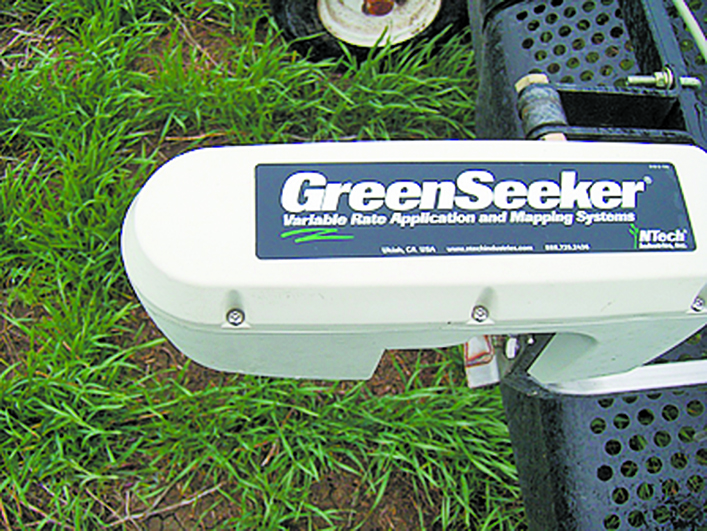
By 2022, several sensors were not taking accurate NDVI readings. Wrong information from the machine is worse than no information at all. It looked like nitrogen recommendations on the Moats farm might have to revert to reliance on conventional soil tests or VR prescription maps. Without accurate sensing, the device was worthless.
Pattison Liquid Systems of Lemberg, Sask., had imported only a half-dozen GreenSeekers by the time Trimble Agriculture decided to halt production when it introduced the hand-held GreenSeeker in 2012. All around North America, parts bins for the full-sized GreenSeeker were empty. There were no spare sensors. Trimble left its customers high and dry. Here on the Canadian Prairies, Moats had the last operational unit in 2022.
In a desperate search for repair or replacement parts, Moats gave Rick Pattison a call on the odd chance there just might be some obscure old inventory on a shelf somewhere. He hit the mother lode. There was one complete kit still in the box plus random spare parts. He snapped up every component the company had.
“Lee’s GreenSeeker should be good for another 13 years now,” Pattison said.
By then it’s highly likely an upgraded version of the concept will be available. When you look at the green-on-green colour recognition technology coming on market for herbicide control, it won’t be long before the concept will apply to on-the-go nutrient recommendations.”
Moats agrees that new technology will surpass his GreenSeeker long before he wears it out a second time. But for now, it means he will not be forced into the mysterious world of building prescription maps for flat land.
With all of the focus on 4R fertilizer practices and the drive to reduce greenhouse gas emissions, a technology that uses optical sensors to optimize nitrogen rates should be of great interest. Using optical sensors to optimize nitrogen makes about the same amount of sense as it does to use them for optimizing herbicide applications.
“Our best-producing land one year may end up being our worst-producing land another year,” he said.
“Moisture associated with slope position is a very important factor. And a few inches can make a big difference. On some fields we might have 320 acres with less than a foot of variation, but a few fields can have 10 feet variation.
“I’m not for or against a concept like variable rate on flatland or any other land. We think that the crop itself is the tool that gets us closer to the right time component of the 4Rs of nutrient stewardship.
“A significant problem is that people really like the idea of that big crop. So they go out and fertilize for that target, even knowing they only have a chance one year out of 10. The crop might be telling them ‘no, we can’t possibly do 90-bushels. Back off.’ But we don’t hear what the crop is telling us.”
Moat’s GreenSeeker experience over 13 years taught him that the machine gave him a better bottom line by reducing nitrogen rates.
“Reducing nitrogen rates to increase profits is not in the psychological makeup of prairie farmers. It flies in the face of human nature.”


